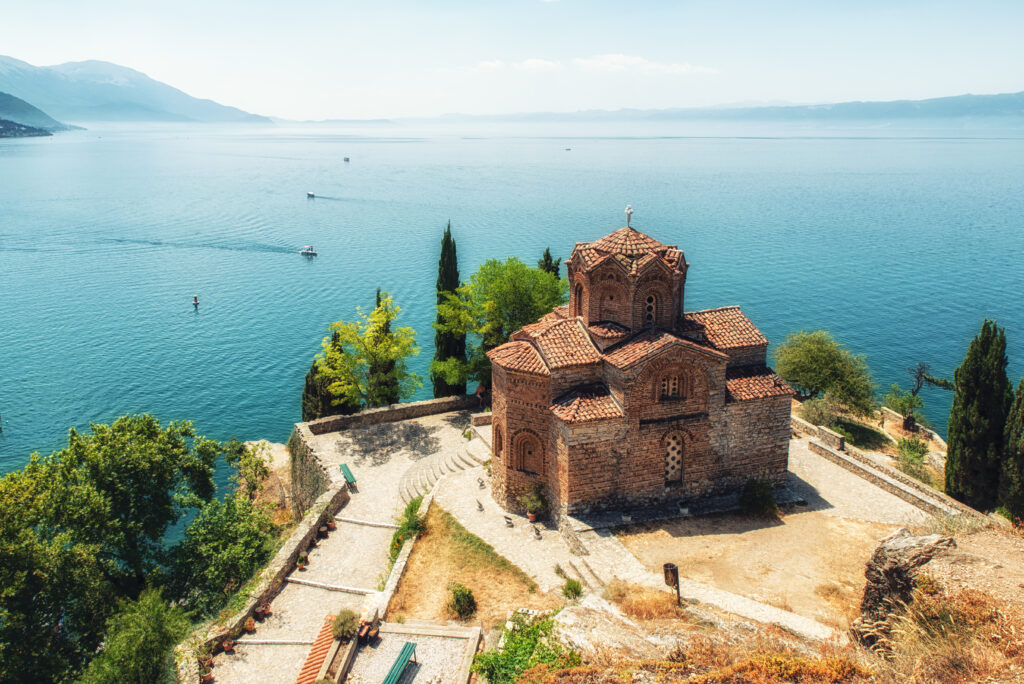
Landlocked in the heart of the Balkans, Macedonia, a former republic of the former Yugoslavia, is still little-known compared to its neighbors Croatia, Bosnia-Herzegovina and Serbia. Who could locate it without hesitation on the map of Europe? This small country of 2 million inhabitants suffers from an image deficit, yetit's a real eye-catcher for those who know how to marvel at the extraordinary variety of landscapes, combining mountainous hills, volcanic reliefs, gorges and canyons, as well as an architectural heritage that has earned it the nickname of "crossroads between East and West" . Beautiful Orthodox monasteries nestled on mountainsides, Catholic churches and Ottoman mosques with welcoming gardens, add beautiful stone to the infinite blue of the lakes, the thick green of the forests and complement the warm colors of the valleys. And these are not just salads...
1. The Bone Museum on Orhid Bay
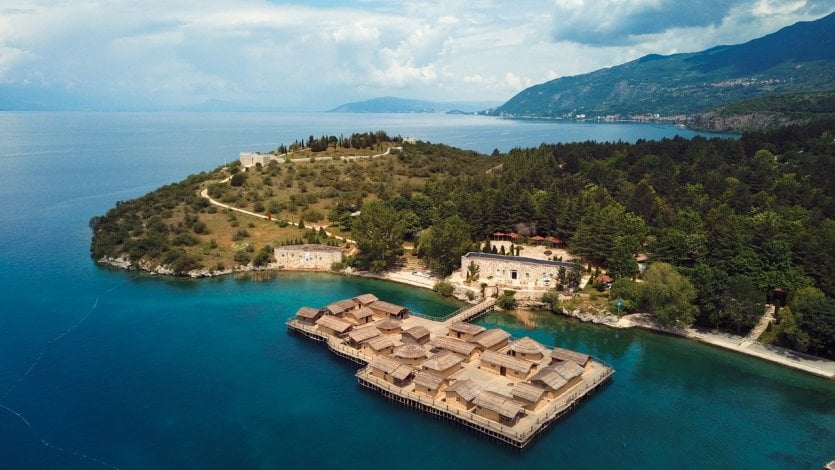
Bone Museum on Orhid Bay © Dave Primov - Shutterstock.com
No, no, the Museum of Bones on Orhid Bay is not a tourist trap! This reconstruction of a prehistoric lakeside village, open to the public since late 2008, houses finds from the Bronze and Iron Ages. Over an area of 8,500m2, no fewer than 6,000 piling sites have been uncovered since 1997. This suggests the existence of a lakeside village of around twenty houses, occupied between 1200 and 700 BC. Numerous objects have also been found: flints, stone and bronze tools, pottery, some perfectly preserved. But above all, the large quantity of carved bones for various uses that gave the site its name. The reconstructed village consists of a platform rising 1.5 m above the water, on which rest eight houses, two of them circular. The interiors of the houses have been reconstructed using animal skins and reproductions of the various objects found.
2. What to do in Macedonia Visit the village of Kuklica
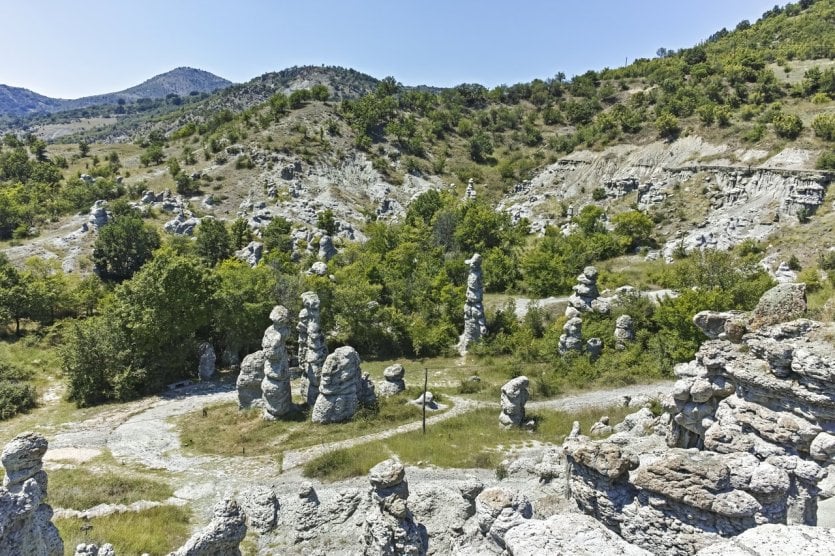
The village of Kuklica © hdesislava - iStockphoto.com
8 km north-west of Kratovo, the hill of Dubica rises up with its many stone figures, often exceeding 10 meters in height and resembling slender human forms. Here you are in the village of Kuklica (Dolls). Nicknamed the "stone dolls"(kameni kuli), the hundreds of rock columns in this area appeared thousands of years ago. Several legends differ as to their origins. The most traditional tells of the bride and groom and their guests, petrified by a lover madly in love and jealous of her rival, promised to her man who had chosen another... The second story, that of the scientists, blames the long erosion of volcanic rocks ten thousand years ago! Whichever story you decide to believe, the dolls are waiting for you. They say you have to see it to believe it.
3. What to do in Macedonia Visit Ohrid

cCAT82 / SHUTTERSTOCK.COM
A veritable museum city, Ohrid carefully preserves within its walls the traces of a rich history, as if past centuries still live on in the memory of the stones. The old town covers just a few square kilometers, but sheltered by the citadel's ramparts, basilicas and churches, the remains of ancient temples, bear witness to the city's former influence. Situated atop one of Ohrid's two hills, the other being occupied by the fortress, Saint-Clement is one of Macedonia's most beautiful churches. Built in 1295 by the Byzantine general Progon Zgour, cousin of Andronic II Palaeologus, it became the Archiepiscopal Museum in the early 16th century, housing numerous Slavonic manuscripts. The great wealth of this church lies undoubtedly in its frescoes, restored in 1950 and the work of two brothers, Michael and Eutyches, innovators in the use of perspective. But above all, its view of the lake is breathtaking...
4. Osogovo Monastery
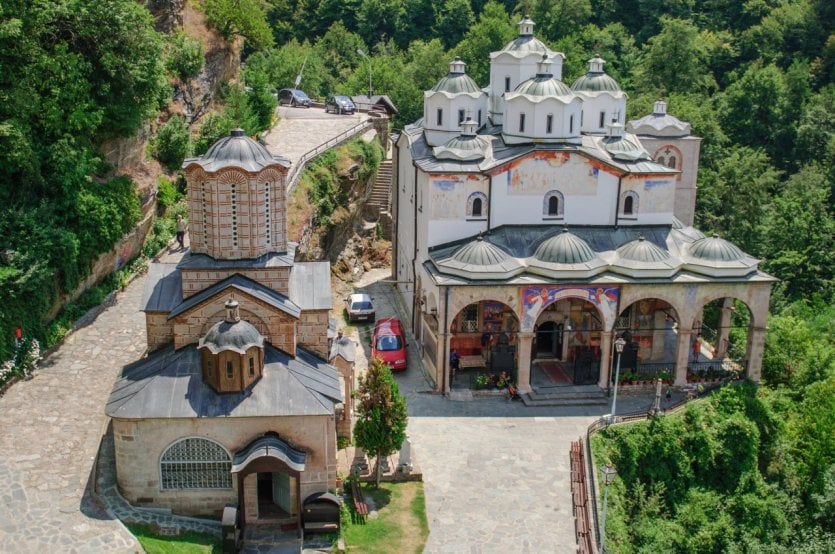
toshe Ognjanov - Shutterstock.com
Osogovo Monastery, Macedonia's best-known sacral building, is located three kilometers northeast of Kriva Palanka, on one of the slopes of the Osogovo mountain range. Built during the reign of the Byzantine Emperor Manojlo (1143-1180), it comprises two buildings: the large and small churches of the complex. The smaller church, renovated in the 14th century, is built of cut stone and brick, while the larger one was erected by a cleric by the name of Andrea Damjanov in the 19th century. Come and admire its twelve domes, each dedicated to an apostle. Inside, superb medieval frescoes cover the stone walls. The gates of the lord are impenetrable, but not those of this Orthodox monastery, which is always open to the curious.
5. What to do in Macedonia Visit Skopje, the capital
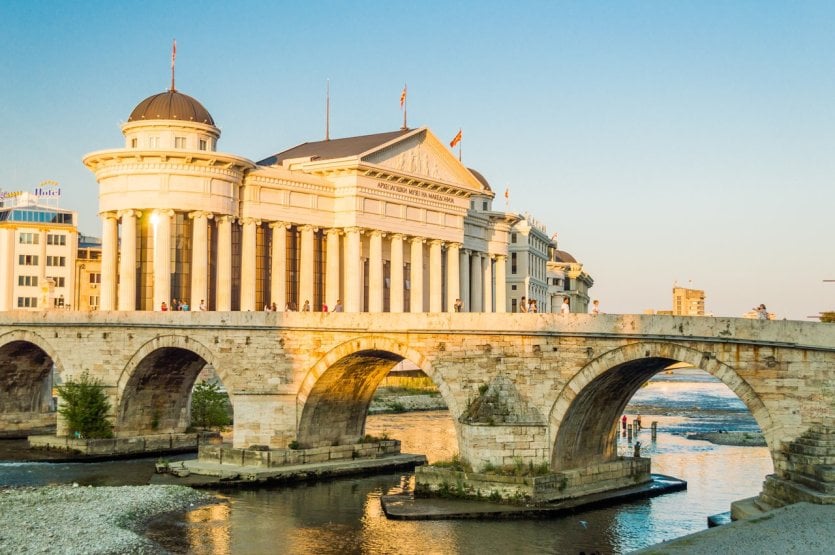
Skopje stone bridge © Andrii Lutsyk - Shutterstock.com
Skopje, the capital of Macedonia, is a fascinating city that blends history and modernity. First and foremost, downtown Skopje is a veritable open-air museum. Here, you'll be able to admire numerous historic monuments such as the Stone Bridge, symbol of the city, the Kale Fortress overlooking the city, and the Church of St. Saviour, one of Skopje's oldest religious buildings. Next, don't miss a visit to the Museum of Macedonia, which traces the country's history from prehistoric times to the present day. The Archaeological Museum of Macedonia and the Museum of Contemporary Art are also worth a visit. For a relaxing break, take a stroll in the city park, Skopje's largest, or in the Old Bazaar, a picturesque district with lively alleyways. Finally, indulge in the local gastronomy with Macedonian specialties such as ajvar, a bell pepper puree, or tavče gravče, a white bean dish.
6. The painted mosque in Tetovo's old town
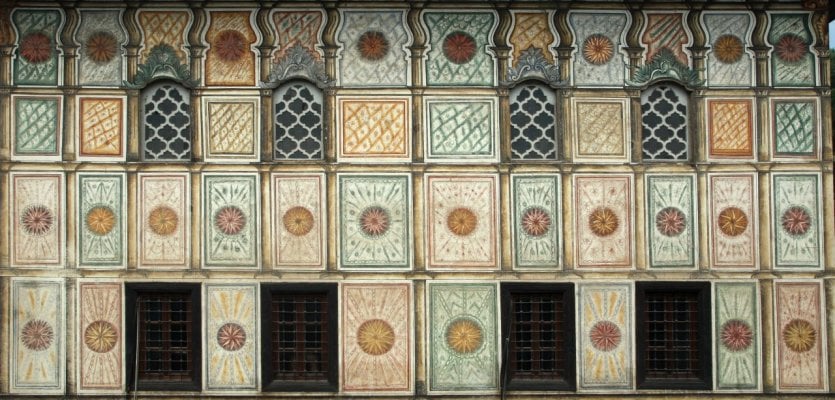
zvonimir Atletic - Shutterstock.com
The Painted Mosque is one of Macedonia's most remarkable buildings and is located in the old town of Tetovo, on the right bank of the Pena River. Built in the 15th century, the building is known by several names: the Painted Mosque, the Variegated Mosque or, as the locals call it, the Pasha Mosque. Its single square room and roof covered with large, dark tiles are as astonishing as its walls adorned with rectangles including geometric motifs that could appear on the backs of playing cards, carpets or hangings. Yet they are typical of traditional Turkish decoration. The mosque is surrounded by a pleasant walled garden, which also includes a fountain for ablutions, the prelude to prayer. There used to be several mosques of this type in the region. The one in Tetovo is the last remaining.
7. What to do in Macedonia See Lake Dojran
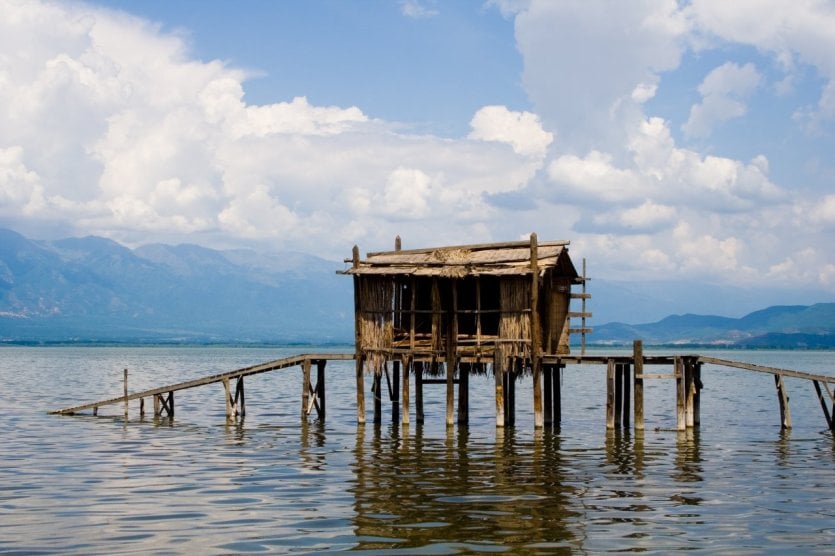
vR Photos - Shutterstock.com
The Balkan country of Macedonia is packed with natural and historical treasures to discover. Among the must-sees, Lake Dojran stands out for its beauty and serenity. Located on the border between Macedonia and Greece, this lake of tectonic origin is one of the oldest in the world. It offers a unique landscape with its calm, crystal-clear waters, surrounded by green hills and lush forests. Visitors can enjoy a wide range of activities around the lake. Hiking enthusiasts can take to the trails that border the lake, offering panoramic views of the surrounding landscape. Birdwatchers will be delighted to observe the many species of birds that inhabit the surrounding area. For those who prefer to relax, the lake's beaches are ideal for swimming, picnicking or simply soaking up the sun. Finally, don't miss a visit to the village of Dojran, famous for its hot springs and delicious smoked fish.
8. St. John Bigorsky Monastery

doin Oakenhelm - Shutterstock.com
The monastery of St. John Bigorski stands in the middle of the forest on the north-western slopes of Bistra Mountain. "Bigorski" comes from the Macedonian word bigor, meaning "limestone tuff", the stone with which the monastery was built in the 11th century. It is also dedicated to St. John the Forerunner (John the Baptist). A lost icon that miraculously reappeared where the monastery church now stands is said to have decided to build it in 1020. The current architecture of the monastery complex, however, indicates that it was built in 1800 and painted during the 19th century. The adjacent buildings, dating from the second decade of the 19th century, and the original dining room add to the monastery's severe beauty. But what makes St. John Bigorsky so interesting is its early 19th-century carved wooden iconostasis, with over 700 figures.
9. What to do in Macedonia Visit the Matka region
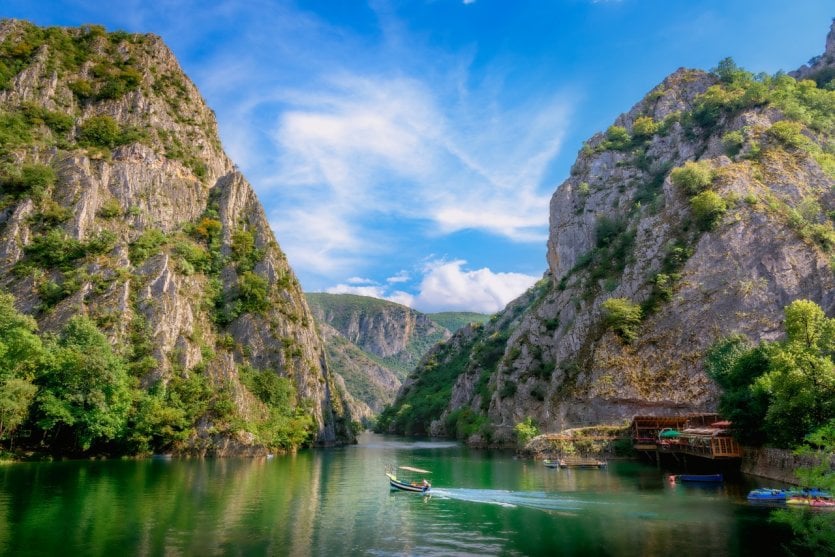
mbrand85 - Shutterstock.com
Some fifteen kilometers from the capital, the Matka region attracts nature lovers and researchers alike, as it represents a natural reserve of rare animal species (notably bald eagles and butterflies that live only on this site). Come and enjoy nature in the heart of the natural canyon of the Treska River, between steep slopes and vertical rocky ridges. But the Matka Speleological Park has more to offer: more than a dozen caves ranging in length from 20 to 176 metres are home to lakes, stalactites and stalagmites. At 212 metres, Vrelo is the deepest underwater cave in the Balkans and the second deepest in Europe. Extreme sports enthusiasts can also indulge in sport climbing, mountaineering or white-water kayaking...
10. Mavrovo National Park
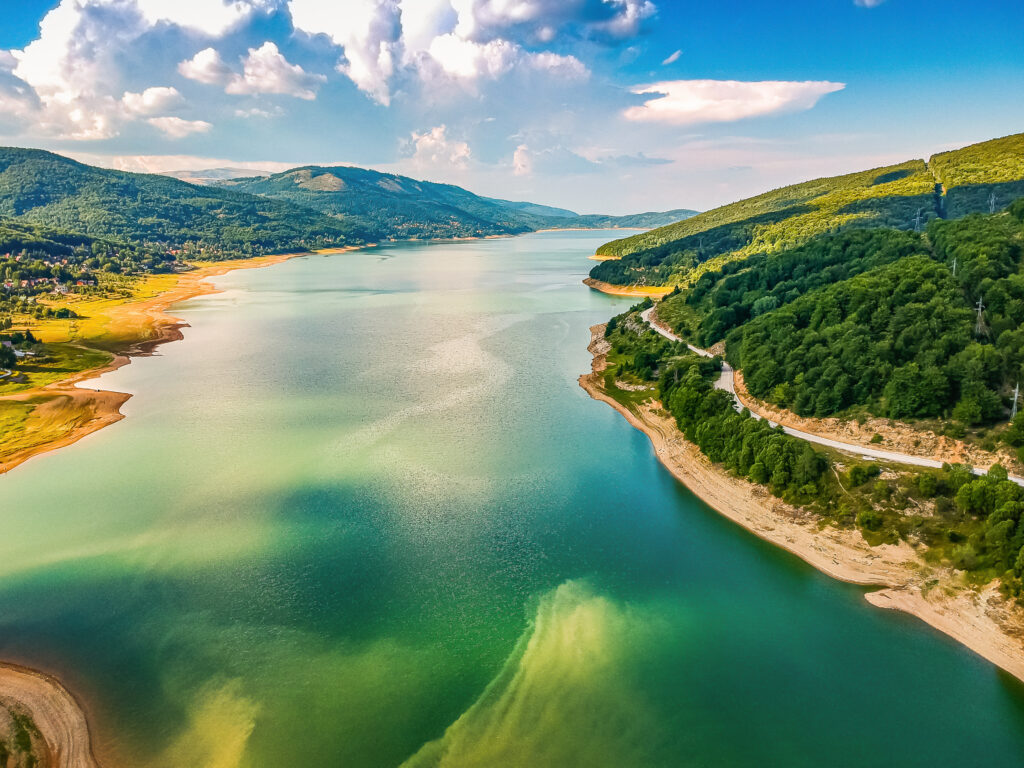
Mavrovo National Park is one of Macedonia's natural wonders. Located in the western part of the country, the park covers more than 730 km² and offers breathtaking scenery. Mountains, forests, lakes and rivers create an ideal setting for nature lovers and outdoor sports enthusiasts. Mavrovo National Park is best known for its man-made lake, Lake Mavrovo, which is surrounded by snow-capped mountains and dense forests. Visitors can enjoy a wide range of water sports, including sailing, kayaking and fishing. The park is also a great place for hiking, with numerous signposted trails to discover the park's varied landscapes. Hikers can admire waterfalls, gorges, pine forests and alpine meadows, and observe animal species such as wolves, lynx, deer and brown bears, as well as numerous bird species.
11. What to do in Macedonia Visitthe monastery of Sveti Naum
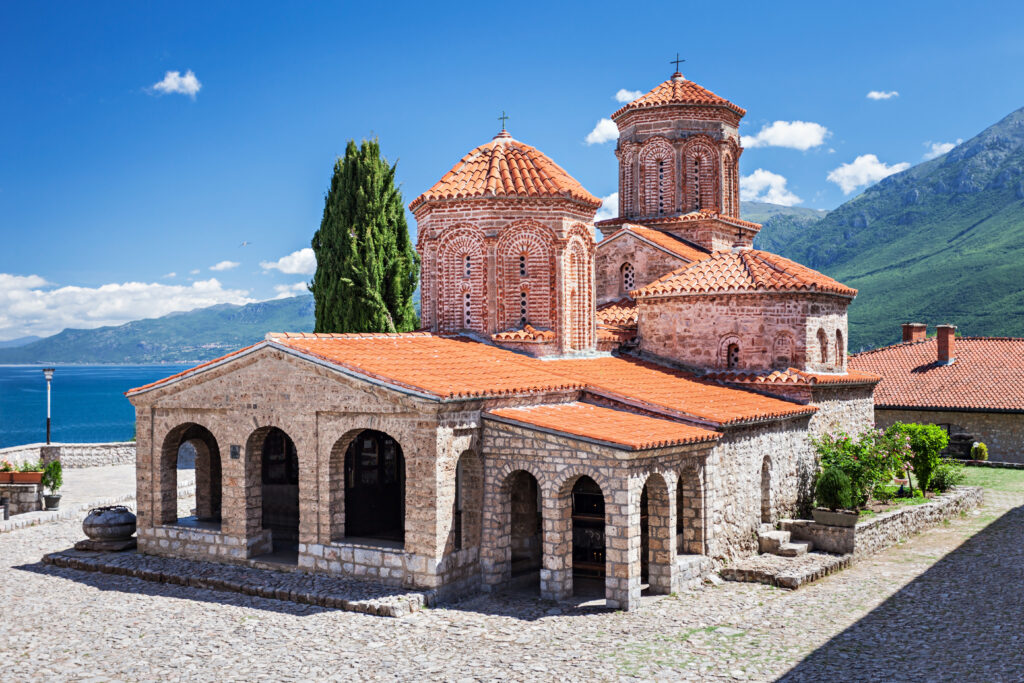
Located on the shores of Lake Ohrid in the southwest of the country, the Sveti Naum monastery is one of Macedonia's most emblematic sites . Founded in the 9th century by Saint Naum, it is an important place of pilgrimage for Orthodox Christians. Admire the monastery's Byzantine architecture, with its stone walls, elegant arches and colorful frescoes. The monastery church is dedicated to Saint Naum and houses his tomb. You can also visit the monastery's museum, which features a collection of icons, manuscripts and liturgical objects. The monastery of Sveti Naum is also famous for its freshwater spring, which gushes out near the church. Legend has it that this spring has healing properties. Take the opportunity to stroll through the monastery gardens, which offer breathtaking views of Lake Ohrid and the surrounding mountains.
12. Lake Prespa and Galicica National Park
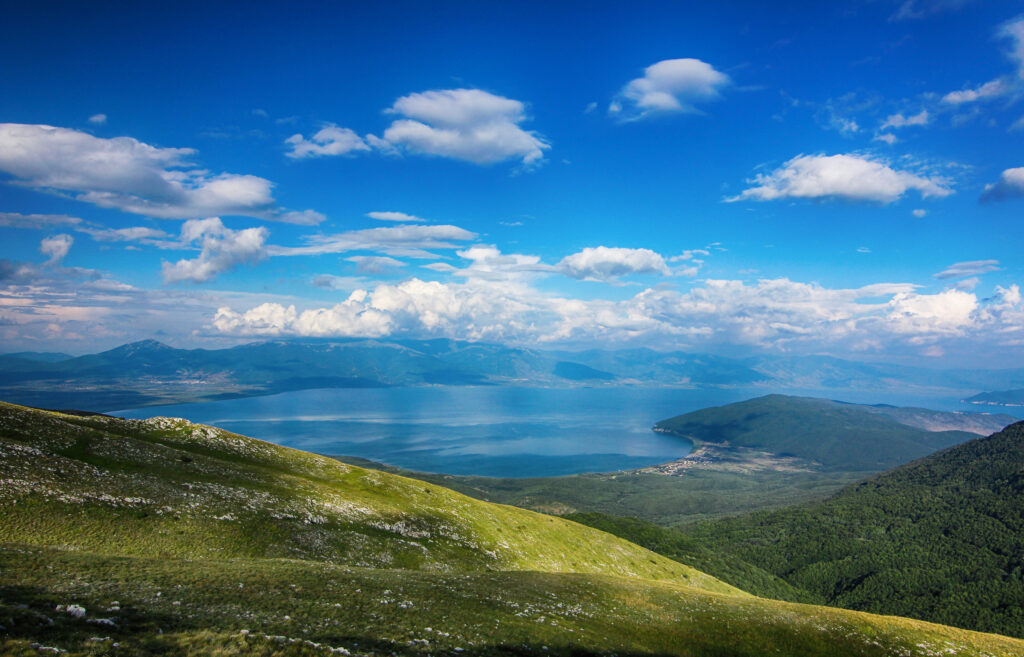
Lake Prespa and Galicica National Park are two of Macedonia's jewels, located in the southwest of the country on the border with Albania and Greece. Lake Prespa is the largest lake in Macedonia and the third largest in the Balkans. It is surrounded by mountains and green hills, offering breathtaking scenery. The lake is also known for its exceptional biodiversity, with over 260 species of birds, including the rare and endangered Dalmatian pelican. There are many activities to enjoy around the lake, including hiking, fishing, birdwatching and swimming. Galicica National Park lies between Lake Ohrid and Lake Prespa. It covers more than 220 km² and offers spectacular scenery, with mountains, forests, meadows and lakes. It's a great opportunity to hike the marked trails through the park and admire the panoramic views of the lakes and mountains.
13. What to do in Macedonia Visit Galicnik, a mountain village
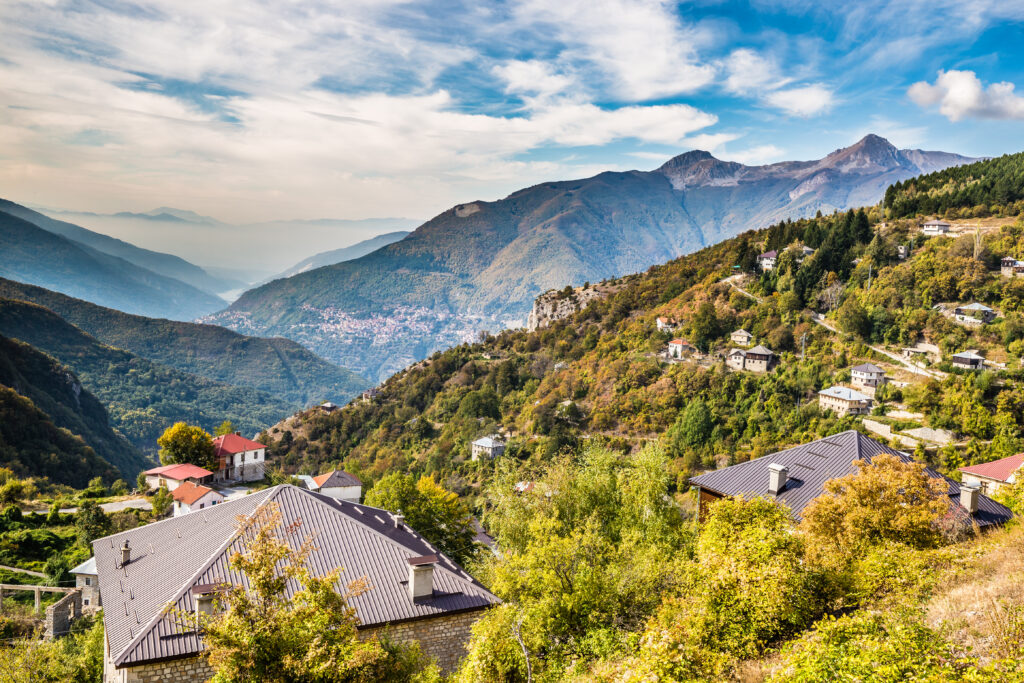
Galicnik is a traditional mountain village in the Mavrovo region of northwest Macedonia, known for its cobbled streets and stone houses. The Church of St. John the Baptist is one of Galicnik's most emblematic monuments. Built in the 19th century, it features remarkable frescoes and icons. The Galicnik Ethnographic Museum is also a must-see place to discover the traditional way of life of the village's inhabitants. Here you can admire handicrafts, traditional costumes and farming tools. Galicnik is also famous for its local gastronomy. Enjoy traditional dishes such as kashkaval, a sheep's milk cheese, or tavce gravce, a white bean dish. The village is also famous for its annual Galicnik Wedding Festival, which celebrates traditional Macedonian weddings.
14. Krusevo
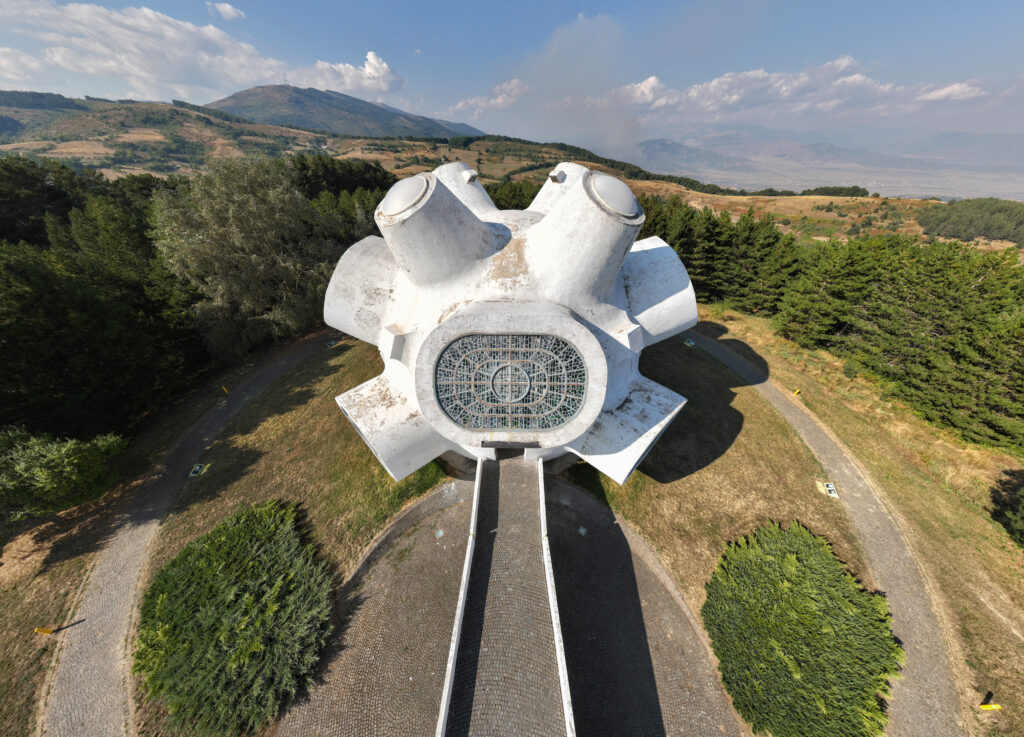
Krusevo is a historic town in central Macedonia, about 130 kilometers south of Skopje. Krusevo is famous for being the birthplace of the Ilinden Revolution, a revolt against the Ottoman Empire in 1903. You can discover the history of this revolt by visiting the Museum of the Ilinden Revolution, which houses historical objects and documents. Krusevo is also known for its traditional architecture, with stone houses and red-tiled roofs. Visitors can stroll along the town's cobbled streets and admire historic buildings such as the Church of St. Nicholas and the clock tower.
Krusevo's surroundings also offer spectacular natural scenery. You can hike or cycle in the mountains and forests or around the lakes.
15. What to do in Macedonia Visit the ancient ruins of Bitola
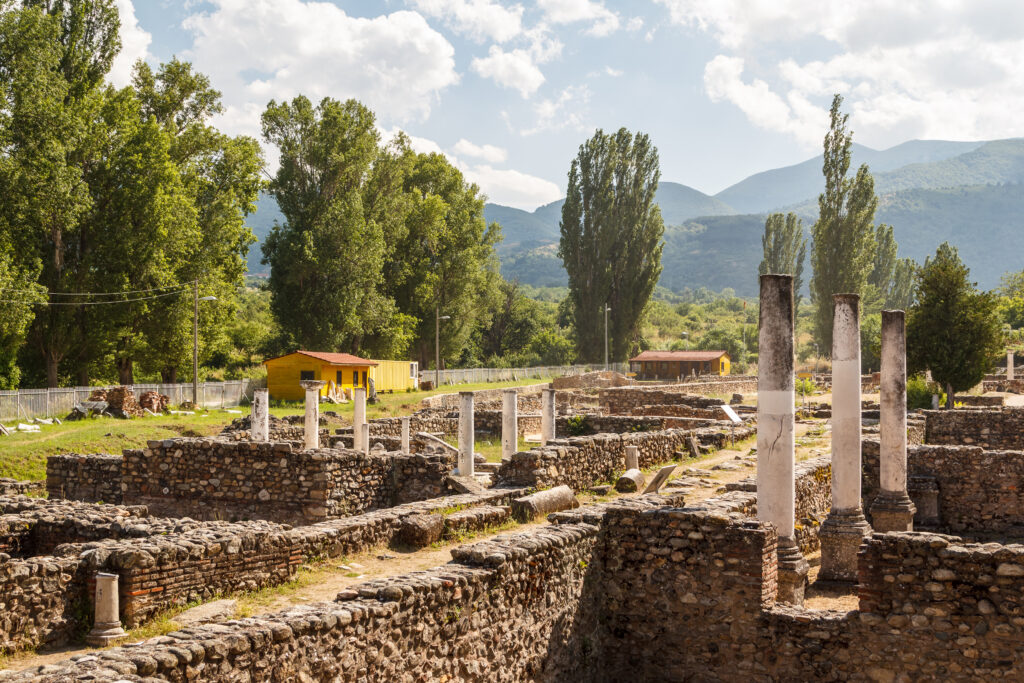
Bitola is a historic town known for its ancient ruins, , which bear witness to its rich and varied past. Be sure to visit the ancient Roman city of Heraclea Lyncestis, which dates back to the 4th century BC and includes public buildings, baths, temples and remarkable mosaics. And don't miss the archaeological site of Stobi, one of Macedonia's most important ancient cities. Stobi was a Roman and Byzantine city, which flourished from the 3rd century BC to the 6th century AD. The ruins of Stobi include public buildings, churches, mosaics and frescoes.
Bitola is also known for its Ottoman architecture, with historic buildings such as the Yeni Mosque, the Clock Tower and the Old Bazaar, as well as for its local gastronomy. This is the perfect opportunity to try kebapi, a type of meat kebab, and burek, a savory pastry made with cheese.
How do I get to Macedonia?
Macedonia is a country in the Balkans, in south-eastern Europe. It is surrounded by Greece, Bulgaria, Albania, Kosovo and Serbia. Here are a few options for getting to Macedonia:
- By plane: Skopje International Airport is Macedonia's main airport. It is served by several European airlines, including Wizz Air, Austrian Airlines, Lufthansa and Turkish Airlines. There is also an international airport at Ohrid, which is served by seasonal flights from several European cities.
- By train: Macedonia is linked to Greece, Serbia and Bulgaria by rail. International trains depart from Skopje and serve several European cities, including Belgrade, Sofia and Thessaloniki.
- By bus: Macedonia is well served by international buses, with regular services from several European cities, including Sofia, Istanbul, Belgrade and Zagreb.
- By car: Macedonia is accessible by car from several neighboring countries. Roads are generally in good condition, but some mountain roads can be narrow and winding. It is also important to check travel document and insurance requirements before driving in Macedonia.
Whatever mode of transport you choose, it's important to check visa and travel document requirements before travelling to Macedonia. Nationals of the European Union, the United States, Canada, Australia and New Zealand can enter Macedonia without a visa for a stay of up to 90 days. Nationals of other countries may need a visa to enter Macedonia.
What are the best things to do in Macedonia?
Macedonia is a country rich in history, culture and nature, offering a variety of activities for travelers. Here are some of the best things to do in Macedonia:
- Visit Skopje, the capital of Macedonia, and discover its unique architecture, museums, historic monuments and bustling bazaars.
- Explore the Mavrovo National Park and enjoy outdoor activities such as hiking, mountain biking, kayaking, fishing and skiing in winter.
- Visit Sveti Naum Monastery, an Orthodox monastery on the shores of Lake Ohrid, and discover its Byzantine architecture, frescoes and icons.
- Discover the Demir Kapiya Gorge, a spectacular canyon in southern Macedonia, and enjoy outdoor activities such as hiking, climbing and rafting.
- Visit Treskavets Monastery, an Orthodox monastery in the mountains of central Macedonia, and discover its Byzantine architecture, frescoes and icons.
Interested in a vacation in Macedonia? Take advantage of a discount by booking your travel insurance here, and leave with peace of mind.
We also recommend that you take a look at our airfares right now and book without delay !


